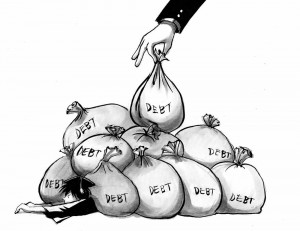Student debt plan underwhelming
Last week, I got an email from James Kvaal, President Barack Obama’s campaign policy director.
“President Obama just took two serious steps to make life a lot easier for folks with student loans,” the email said. “These changes will make a real difference in helping millions of Americans get by month to month.”
But is the change as drastic as Kvaal and the rest of the Obama administration make it out to be?
Obama rolled out “Pay As You Earn,” the administration’s new student loan relief program, last week. The program aims to relieve student debt by lowering the maximum required payment on student loans from 15 to 10 percent of discretionary income and by forgiving debt after 20 years instead of the previous 25.
At first glance, the plan seems like a great solution to many of the nation’s educational problems.
More than 1 million students could take advantage of the lower monthly payments, and more than 6 million could take advantage of the loan consolidations.
Kvaal said it would fast-track student debt relief by moving the previous target date for relief of 2014 to next year.
Critics say Obama is making a mistake by surpassing Congress to accomplish this. Others laud him for making a smart political move. Students who desperately need debt relief are lost in the politics.
Kvaal and Obama are careful not to say that the plan neglects students struggling to pay off private debt. And these are some of the students who need the most help.
Private loans are much more difficult to pay off than federal loans. They have fewer protections, more variable interest rates and often cost more to the borrower. Not to mention, bankruptcy reform passed in 2004 doesn’t allow students with private student debt to declare bankruptcy.
More than $100 billion in federal education loans and $10 billion in private student loans are originated each year according to FinAid.org. Though federal education loans represent a larger portion of the debt, those students in the private sector must be protected too. They are trying to earn an education as well and if overarching debt reform is to be effective, all students must benefit.
They’re all stuck with this debt. Pay As You Earn neglects students with this problem, which points to the program as more of a political move than a push for genuine educational debt reform.
It’s a good thing Obama is responding to such a critical issue. But, Pay As You Earn has overlooked some students and stimulated political policy debate rather than a discussion on higher education.
The program is a step in the right direction. The politically dominated discussion distracts and prevents Pay As You Earn from functioning as a true solution to such a critical issue, with many analyzing it as a political move in anticipation of next year’s election.
Students are first and foremost students, not voters. Obama should revise Pay As You Earn with this in mind to include all students weighed down with debt.
Elena Kadvany is a senior majoring in Spanish. Her column “Beyond the Classroom” runs Mondays.


Why does the author seem to think that students deserve the right to be “protected” from loans? A loan is when you borrow money, and then have to PAY IT BACK.